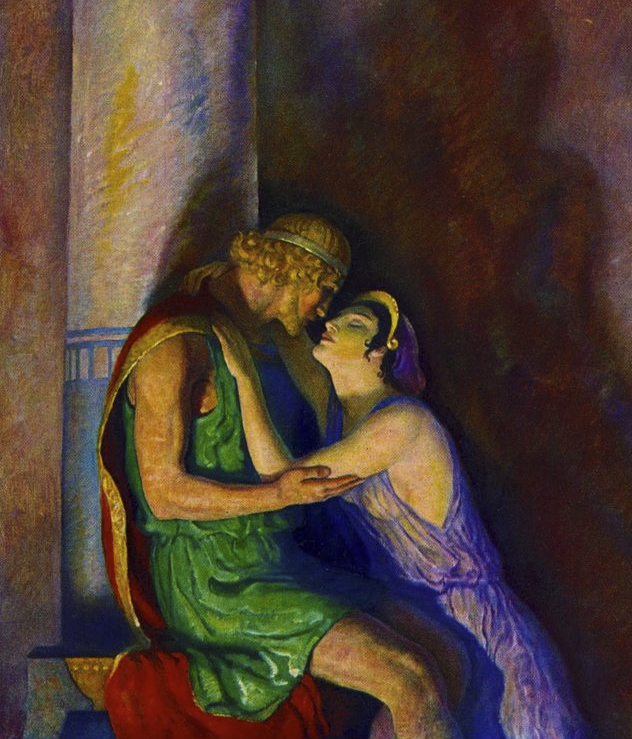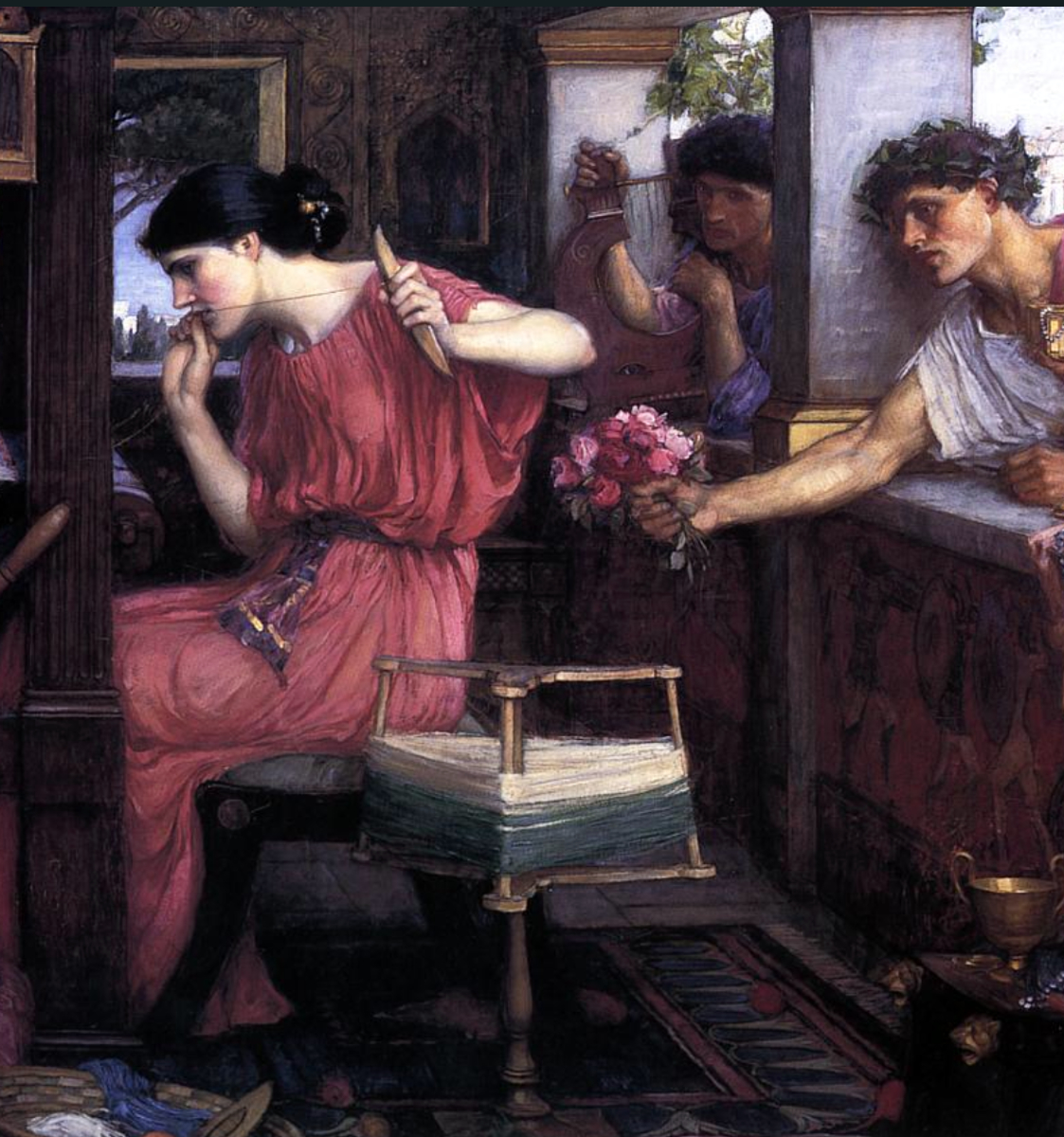Penelope is a character in Homer’s Odyssey. She was the queen of Ithaca and was the daughter of Spartan king Icarius and Asterodia. Penelope is known for her fidelity to her husband Odysseus, despite the attention of more than a hundred suitors during his absence. In one source, Penelope’s original name was Arnacia or Arnaea. She only has one son with Odysseus, Telemachus, who was born just before Odysseus was called to fight in the Trojan War. She waits twenty years for Odysseus’ return, during which time she devises various cunning strategies to delay marrying any of the 108 suitors. On Odysseus’s return, disguised as an old beggar, he finds that Penelope has remained faithful. She has devised cunning tricks to delay the suitors, one of which is to pretend to be weaving a burial shroud for Odysseus’s elderly father Laertes and claiming that she will choose a suitor when she has finished. Every night for three years, she undoes part of the shroud, until Melantho, a slave, discovers her chicanery and reveals it to the suitors.
| Alias Penelope |
| Real Names/Alt Names Penelope |
| Characteristics Royalty, Myths & Legends, Bronze Age |
| Creators/Key Contributors Homer |
| First Appearance Greek mythology |
| First Publisher ○ |
| Appearance List Literature: Homer’s Odyssey (c. 8th century BCE, English 1614), Homer’s Iliad (c. 8th century BC), Virgil’s Aeneid (29 to 19 BC), 5th century plays by Aeschylus, Sophocles (Ajax, Philoctetes), and Euripides (Hecuba, Rhesus, Cyclops), Plato’s Hippias Minor, Shakespeare’s Troilus and Cressida (1602), Dante Alighieri’s Divine Comedy (1308–1320), Lord Tennyson’s “Ulysses” (1842), The Story of Greece: Told to Boys and Girls by Mary Macgregor (191-?) [Internet Archive], Frederick Rolfe’s The Weird of the Wanderer (1912), James Joyce’s Ulysses (1918–1920), Nikos Kazantzakis’ The Odyssey: A Modern Sequel (1938), Eyvind Johnson’s Return to Ithaca (1946), The Luck of Troy (1961), et. al. Film: The Mysterious Island (1905), L’Odissea (1911), Ulysses (1954), Ulysses (1955), The Trojan Horse (1961), The Fury of Achilles (1962), Ulysses Against the Son of Hercules (1962), The Lion of Thebes (1964), et. al. Comics: Blue Bolt vol. 2 #1-2, Treasure Chest vol. 14 #5. |
| Sample Read The Odyssey (Translated by W. C. Bryant, August, 1871) [Standard eBooks] |
| Description Penelope is a character in Homer’s Odyssey. She was the queen of Ithaca and was the daughter of Spartan king Icarius and Asterodia. Penelope is known for her fidelity to her husband Odysseus, despite the attention of more than a hundred suitors during his absence. In one source, Penelope’s original name was Arnacia or Arnaea. She only has one son with Odysseus, Telemachus, who was born just before Odysseus was called to fight in the Trojan War. She waits twenty years for Odysseus’ return, during which time she devises various cunning strategies to delay marrying any of the 108 suitors. On Odysseus’s return, disguised as an old beggar, he finds that Penelope has remained faithful. She has devised cunning tricks to delay the suitors, one of which is to pretend to be weaving a burial shroud for Odysseus’s elderly father Laertes and claiming that she will choose a suitor when she has finished. Every night for three years, she undoes part of the shroud, until Melantho, a slave, discovers her chicanery and reveals it to the suitors. |
| Source Penelope – Wikipedia |


